Categories
Northern Virginia Real Estate, Community Spotlights, Local History, Commuter Lifestyle
Northern Virginia’s Vienna, Burke, and Clifton are beloved suburban communities today, but they each began as humble railroad outposts in the 19th century. This long-form exploration looks at how these towns transitioned from rural rail stops to thriving commuter suburbs. We’ll delve into their historical backgrounds, the growth spurts that suburbanized them, changes in urban development and zoning, the evolution of transportation infrastructure, demographic shifts, and the lifestyle appeal that draws residents today. Each town has a unique story—from Vienna’s bustling small-town charm and Burke’s planned suburban neighborhoods to Clifton’s preserved historic village ambiance—all shaped by the rails that once ran through them.
Vienna, Virginia: From Railroad Village to Thriving Suburb
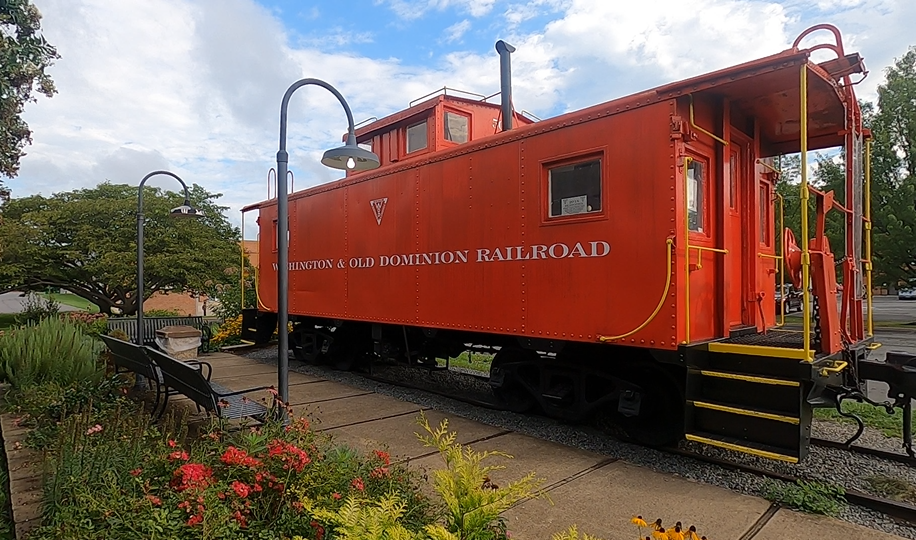
The Washington & Old Dominion Railroad red caboose on display in Vienna’s Centennial Park serves as a reminder of the town’s rich railroad heritage.
Trains first reached Vienna in 1858–1859 with the arrival of the Alexandria, Loudoun & Hampshire line (later the Washington & Old Dominion Railroad). This new rail connection put Vienna on the map, transforming it from a quiet farming hamlet (then known as Ayr Hill) into a modest commercial village. The railroad became Vienna’s transportation backbone well into the 20th century. During the Civil War, the town saw one of the first tactical uses of a train in battle (the 1861 Battle of Vienna) and was occupied by both Union and Confederate forces due to its strategic rail line. By 1890, Vienna had grown to a village of about 300 people and earned an official town charter, electing its first mayor. The turn of the century brought a streetcar line in 1903 and the first automobiles soon after, but the railroad remained vital for moving people and goods until World War II.
Post-war suburbanization utterly transformed Vienna. In 1940 it was still a rural town of only 1,237 residents, largely untouched by the burgeoning capital region. Then the post–World War II housing boom hit Northern Virginia – and Vienna in particular. The town’s population exploded by nearly 10,000 new residents in the late 1940s and 1950s. Dirt roads and dairy farms gave way to new subdivisions with modern water and sewer systems. Longtime locals recall how Maple Avenue, once lined with maple trees and Victorian homes, was widened and commercialized to accommodate the influx of suburban newcomers. In the 1950s and 60s, many businesses relocated from the old Church Street downtown to the more auto-friendly Maple Avenue corridor. Vienna worked to balance growth with small-town character, establishing institutions like the Town Green and preserving historic sites along Church Street. The town embraced improvements such as a new community center (opened 1966) and library (1971). By 1960, Vienna’s town population soared past 10,000, and today it stands around 16,500 residents, with many more in the surrounding “Vienna” postal area outside town limits.
Urban development and planning: As an incorporated town, Vienna has managed its own zoning to maintain a small-town feel despite encroaching suburban sprawl. Single-family homes on tree-lined streets are the norm, with a mix of older homes and newer builds replacing mid-century ramblers. The town has deliberately kept building heights low, especially after community pushback against dense development along Maple Avenue. (In fact, Vienna updated its zoning in 2023 to allow slightly taller mixed-use buildings in the Maple Avenue core, but still limits heights to preserve charm.) This careful planning means Vienna’s central district retains a village atmosphere even as the larger Fairfax County area urbanizes. Notably, Vienna incorporated historic districts like Windover Heights to protect older homes, and it celebrates its heritage through organizations like Historic Vienna, Inc.
Transportation evolution: Over time, the car replaced the train as Vienna’s primary commuter link. The Washington & Old Dominion Railroad ultimately ceased operations in 1968, and its former right-of-way became today’s popular W&OD biking and walking trail. Meanwhile, new highways and transit reshaped Vienna’s connectivity. Interstate 66 was constructed just south of town in the 1960s–70s, shortening drive times into D.C. The Capital Beltway (I-495) runs a few miles east, and Route 123 connects Vienna to Fairfax City and Tysons. The biggest transit development came in 1986, when the Vienna/Fairfax–GMU Metro station opened as the western end of Metro’s Orange Line. Though actually just outside town limits, this Metro stop cemented Vienna’s status as a convenient commuter town – thousands of residents park at Vienna Metro or take feeder buses (like the Fairfax Connector) for easy rides into Washington, D.C. and Arlington. Today, Vienna offers the best of both worlds transportation-wise: a walkable town center and trail system for local trips, plus quick highway and Metro access for city commuters.
Demographics and culture: Once a small farming community, Vienna is now an affluent, diverse suburb reflecting Northern Virginia’s broader population. Early on, the town included a notable African American community – for example, Vienna opened one of Fairfax County’s first Black public schools in 1868. In recent decades, Vienna has attracted a mix of professionals from across the U.S. and the world. As of 2020 the town’s population was roughly 74% white, 13% Asian, 10% Hispanic, and 2% Black, a far cry from its overwhelmingly white agricultural roots. The median household income is well into six figures, and Vienna consistently ranks as one of Virginia’s most desirable places to live, thanks to its high-performing schools (Madison, Marshall, and Oakton high school pyramids), safety, and community spirit.
Modern lifestyle and community appeal: 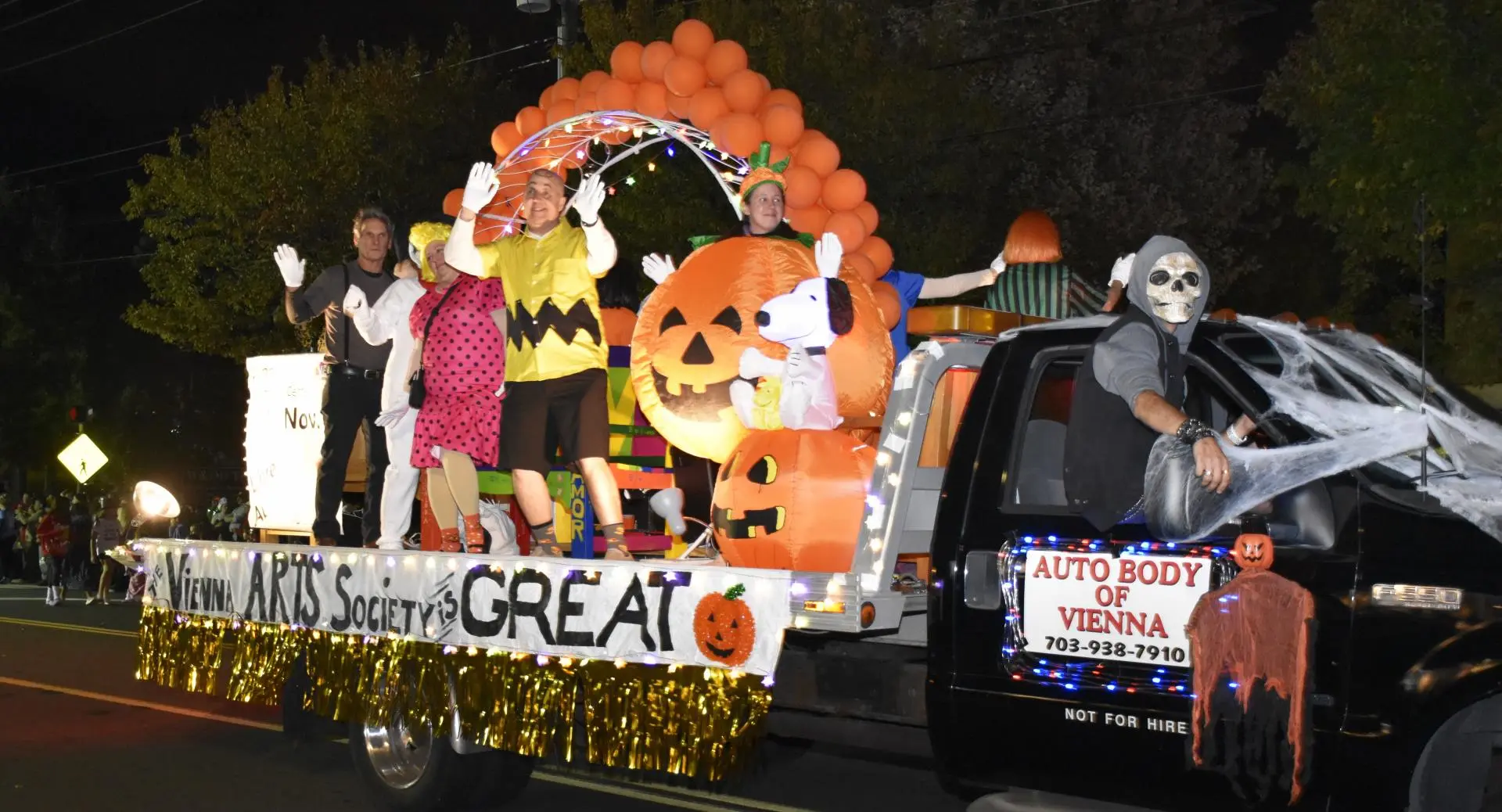
Ask any resident and they’ll tell you Vienna strives to “keep the small-town feel.” The Town of Vienna sponsors events year-round that bring the community together. A cherished tradition is the Vienna Halloween Parade, running since 1946, where local bands, businesses, and kids march down Maple Avenue every October. Each spring, the ViVa! Vienna! festival (started in 1984) takes over Church Street with carnival rides and vendors. Summers bring concerts on the Town Green, and a weekly farmers market sets up by the historic Freeman Store (a 1850s general store turned museum). Parks and green space abound – from Nottoway Park’s trails and sports fields to the 45-mile W&OD Trail that cuts through town, Vienna offers plenty of outdoor recreation. Families enjoy Meadowlark Botanical Gardens and the Wolf Trap performing arts park just outside town. Maple Avenue and Church Street feature a mix of local boutiques, eateries, and cafes alongside everyday conveniences, so residents can often run errands or meet friends without leaving town. Despite being enveloped by the D.C. metroplex, Vienna maintains an identity as a close-knit community. It’s a place where neighbors gather for small-town fun (like the annual “Walk on the Hill” garden tour in Windover Heights) even as they enjoy the big-city opportunities just a short commute away.
Burke, Virginia: From Rural Station to Planned Suburban Community
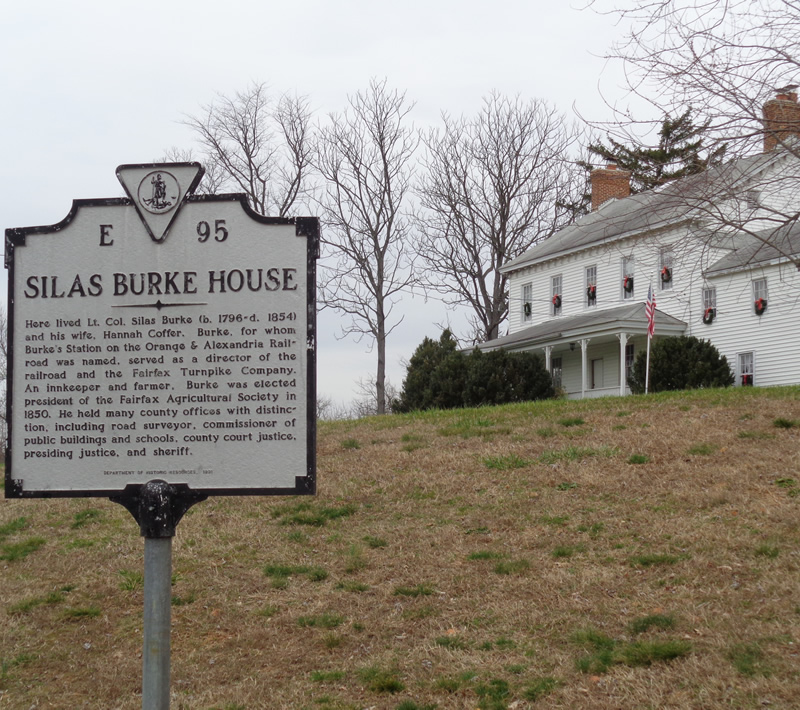
The historic Silas Burke House (built circa 1824) still stands on a hill in Burke, Virginia. The home of Burke’s namesake reflects the area’s transition from a 19th-century rural farm community to a modern suburb.
Unlike Vienna and Clifton, Burke is not an incorporated town – it’s an unincorporated area of Fairfax County – yet its origins and evolution are just as compelling. Burke is named for Silas Burke, a local 19th-century farmer, merchant, and politician who owned a large estate here. When the Orange & Alexandria Railroad was built through Fairfax in the late 1840s, Silas Burke donated land for the rail line and station, which opened in 1851 and was named “Burke’s Station” in his honor. This rail stop on the O&A line (connecting Alexandria to central Virginia) became the nucleus of the community. Throughout the late 1800s, Burke’s Station was a modest hub where farm goods and passengers could be exchanged, reaching a peak of activity in the Victorian era when railroads flourished. During the Civil War, Burke’s Station was a strategic outpost – occupied by Union troops and even raided by Confederate cavalry under J.E.B. Stuart in 1862. A small village grew around the station, complete with a post office (established 1852) and a general store. In 1903, the post office name was shortened simply to “Burke” as the community’s identity coalesced.
For the first half of the 20th century, Burke remained predominantly rural – a landscape of dairy farms, fields, and forest well outside Washington’s suburban fringe. After World War I, a trickle of federal employees began moving to Burke for a quieter life, taking the train each day into D.C. Still, mid-century Burke was “in the country,” known more for its farmland and the picturesque Burke Lake (created in the 1950s as a water supply reservoir and later a county park) than for any urban development. An interesting historical footnote: in the 1950s, Burke was considered as a potential site for the new Washington international airport, but fierce community opposition – even involving an act of Congress – thwarted the plan. (The airport was ultimately built in Dulles, and Burke’s rural tranquility was preserved a bit longer.) By the 1960s, however, suburban growth could not be held back. After 116 years of service, passenger trains ceased stopping at Burke in 1967 as rail travel declined. The old station would soon make way for a new era.
Suburban transformation: The spark that ignited Burke’s suburban boom was a large subdivision called Kings Park, built in 1960 just east of Burke’s historic center. Kings Park brought hundreds of new homes and signaled the arrival of Northern Virginia’s post-war housing demand. It was followed by many other subdivisions through the 1960s and 1970s. What had been countryside rapidly converted into cul-de-sac neighborhoods and shopping plazas, as Burke’s population jumped from just a few hundred mid-century residents to thousands. One defining project was Burke Centre, a 1,700-acre master-planned community launched in 1977 with roughly 5,800 residences. Burke Centre was carefully designed with five community “clusters,” each with its own pool and community center, plus greenbelts and walking trails threading through the neighborhoods. Planners preserved acres of parkland and mature trees in Burke Centre, giving it an “almost-rural landscape” despite the suburban housing density. By the early 1980s, Burke Centre and adjacent developments (like Little Rocky Run and others) had filled in the once-rural expanse between Fairfax City and Springfield. Fairfax County also invested in schools, opening large modern schools such as Lake Braddock Secondary and Robinson Secondary to serve the flood of families. Today, “Burke” broadly includes both the original Burke area and Burke Centre, with a combined population of around 60,000 people (the Burke CDP had 42,000 in 2020, plus ~17,000 in Burke Centre CDP). The community is fully suburbanized, characterized by leafy subdivisions of single-family homes and townhouses, several shopping centers, and plenty of parks. Yet reminders of Burke’s past remain – including the white Silas Burke House on the hill (now part of a senior living campus) and historic sites like Burke’s Station Cemetery and several 19th-century homes tucked among the newer developments.
Urban development and zoning: Because Burke is unincorporated, development has been guided by Fairfax County’s comprehensive plans and zoning. In the 1970s, as growth accelerated, the county aimed to balance new construction with environmental protection. Notably, parts of Burke lie in the watershed of the Occoquan Reservoir (a major drinking water source). In 1982 Fairfax County enacted a famous “downzoning,” limiting much of the surrounding area to 5-acre minimum lot sizes to curb overdevelopment and protect water quality. This downzoning affected areas south and west of Burke, particularly around Clifton and Fairfax Station, helping to prevent complete suburban build-out in those directions. Within Burke itself, most subdivisions were built under “Planned Residential Community” zoning or similar schemes, allowing clusters of homes offset by common open space. The result is that even though Burke is densely populated, it retains a pleasant green character – evidenced by neighborhood playgrounds, wooded stream valleys, and the preservation of Burke Lake Park’s 888 acres on its southern edge. Commercial development in Burke has been kept to community-serving retail rather than large industrial or office centers; residents typically shop at local plazas (like Burke Centre Shopping Center or Rolling Valley Mall) or drive to bigger hubs in Springfield or Fairfax City. In terms of housing trends, Burke’s stock is primarily single-family houses (ranch and colonial styles from the 60s–80s and larger contemporary homes in later developments) along with some townhomes and relatively few apartments. Planning decisions have helped Burke remain a quiet, residential enclave, even as the greater Fairfax area around it grew immensely.
Transportation shifts: As the community expanded, Burke became a classic automobile-oriented suburb – yet it also saw a revival of rail in a new form. The expansion of highways in the 1970s and 80s improved Burke’s road connectivity: Burke Lake Road and Ox Road (Route 123) were widened, the Fairfax County Parkway was built just to the west, and I-495 (the Beltway) and I-95 are within a short drive. These highways made car commutes north toward Tysons or east toward Alexandria and D.C. feasible (though rush hour traffic is infamously heavy). Recognizing the need for transit, Virginia launched the Virginia Railway Express (VRE) commuter rail in 1992 – and one of its initial stations was Burke Centre. The VRE Manassas Line now carries many Burke residents via train directly into Alexandria and downtown D.C. each weekday. At the Burke Centre VRE station, a 1,500-space parking garage opened in 2008 to accommodate park-and-ride commuters. Additionally, Fairfax Connector buses and Metrobus lines serve Burke, linking it to the Springfield Metro station (on the Blue Line) and other transit hubs. Still, most locals rely on personal cars for daily needs. The community’s layout reflects this: Burke Centre Parkway, for example, is a four-lane arterial road spanning the community with numerous cul-de-sac subdivisions branching off. Sidewalks and trails are common within neighborhoods, making them walkable internally, but connecting between many parts of Burke often requires a drive. In short, Burke’s evolution has been guided by the rise of the automobile, but thanks to VRE and coordinated planning, residents do have options beyond driving, and the town benefits from reduced traffic due to those who take the train.
Demographic changes: The postwar decades saw Burke transition from a sparse agrarian populace to a booming middle-class suburb. Many of the first wave of Burke residents in the 60s and 70s were young federal workers, military personnel, and Baby Boomer families seeking affordable homes near the capital. Over time, the community has become quite affluent and diverse. Today Burke’s median household income is about $179,000– a reflection of the highly educated workforce (over two-thirds of adults have a bachelor’s degree or higher). Demographically, Burke has grown more multicultural; census data shows roughly 55% of residents are white, 17% Asian, 16% Hispanic, and 6% Black. This diversity is visible in the variety of local restaurants and the many cultures represented in local schools. Because Burke developed a bit later than inner suburbs, it remains largely a community of single-family homeowners, often families with children. Many original 1970s homeowners have since become empty nesters, and new generations are moving in, keeping the community vibrant.
Lifestyle and community today: 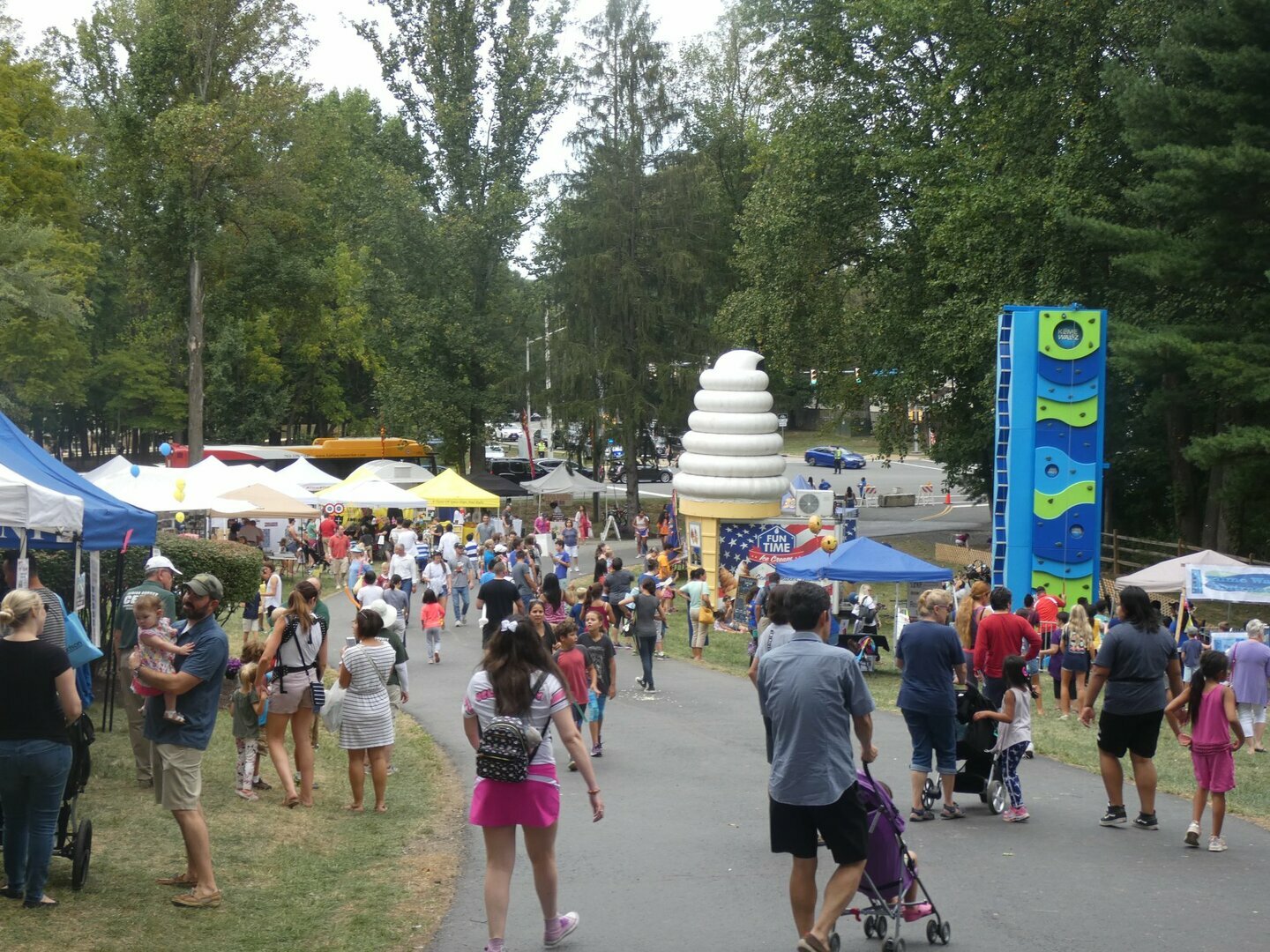
Burke offers a quiet, family-friendly lifestyle with a strong emphasis on community and nature. The area is known for excellent public schools (served by Fairfax County Public Schools, including top-rated schools like Robinson Secondary, Lake Braddock Secondary, and Woodson High for various parts of Burke). Residents have an abundance of recreational amenities: Burke Lake Park is a crown jewel, featuring a 218-acre lake with fishing and boating, miles of hiking/biking trails, campgrounds, a mini-golf and carousel, and even a miniature train ride – a nod to the area’s railroading history. There are also numerous smaller parks, playgrounds, and community pools (thanks to Burke Centre’s planning). Each fall, the Burke Centre Conservancy hosts the Burke Centre Festival, a community fair with crafts, food, and entertainment that draws thousands of residents. Burke may not have a walkable “downtown,” but it has plenty of local conveniences – from grocery stores and coffee shops to favorite eateries – spread across its shopping centers. Neighbors tend to know each other through school events, swim clubs, places of worship, and civic groups. For instance, the Burke Historical Society actively promotes local history, and volunteer organizations ensure community spirit stays strong. The vibe is proudly suburban: quieter than bustling Vienna or Fairfax, but with all the necessities close at hand. And when Burke residents crave more, they know major malls, restaurants, and cultural venues are just a short drive or VRE ride away. In essence, Burke has completed its journey from sleepy railroad whistle-stop to a prosperous suburban haven that retains a relaxed, green character.
Clifton, Virginia: From Civil War Railroad Stop to Preserved Small Town
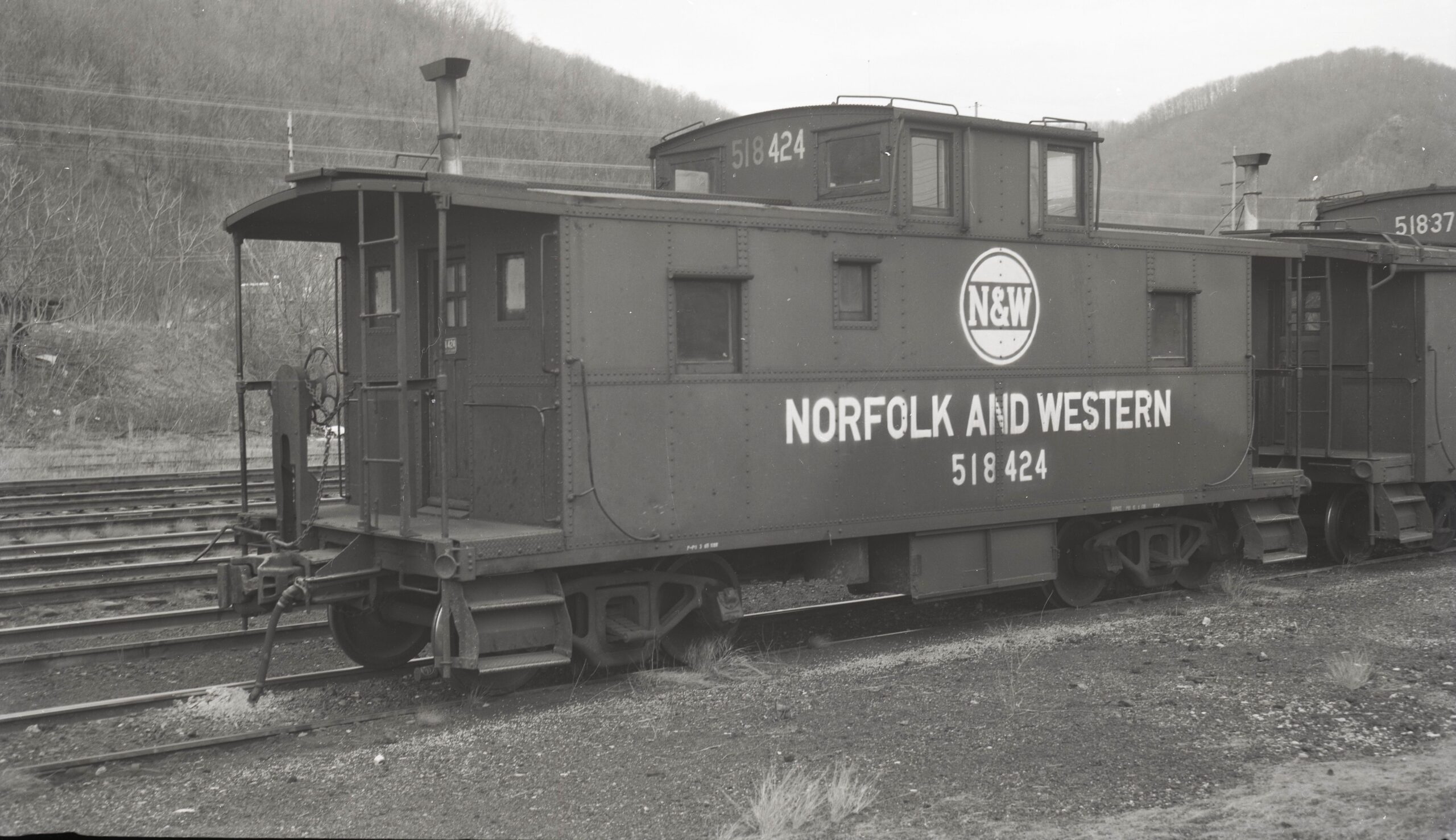
A vintage Norfolk & Western caboose (No. 518590) sits on the old railbed at Clifton’s “Devereux Station” site, alongside a state historic marker. This caboose commemorates Clifton’s 19th-century railroad origins and marks where the train depot once stood.
In contrast to Vienna and Burke, which grew into sizable suburbs, Clifton is a tiny town that time nearly forgot. Tucked in southwestern Fairfax County, Clifton proper covers only 0.25 square miles and is home to just around 240 residents as of 2020. Yet despite (or because of) its small size, Clifton has a rich history as one of Northern Virginia’s earliest rail towns – and today it stands as a beautifully preserved historic village amid the sprawl. Clifton’s story begins during the Civil War. In 1863, the U.S. Military Railroad built a siding on the Orange & Alexandria Railroad at the site, using it to load timber and supplies for Union forces. This stop was named Devereux Station after John Henry Devereux, a superintendent of military railroads. The Union Army maintained troops here to guard the rails, and the area saw war activity (two nearby skirmishes and visits from figures like General Ulysses S. Grant). After the war, in 1868, a proper passenger station was constructed, and a forward-thinking entrepreneur named Harrison G. Otis purchased land around it to lay out a town. He renamed the stop Clifton Station (inspired by the area’s cliff-like terrain or perhaps an English estate name) and opened the grand Clifton Hotel in 1869. Thus, Clifton was born, directly as a railroad town in the post-war reconstruction era.
Clifton blossomed in the late 19th century as a rustic resort getaway for Washingtonians. With the railroad providing easy access, city dwellers came to Clifton to enjoy its saloons, a spa with mineral springs, hunting in the surrounding woods, and the general peace of country life. The Clifton Hotel and other boarding houses did good business, earning the town the nickname “Brigadoon” for its almost magical seclusion. Remarkably, Clifton was ahead of its time in some ways – it was the first town in Fairfax County to get electricity (in 1925, via the Bull Run Power Company) and it hosted the county’s first high school (opened in the early 1900s, with students actually taking the train to class). The town incorporated in 1902, establishing its own mayor and council, and remained the primary commercial center for area dairy and lumber farmers through the early 20th century. Small businesses like the Buckley Brothers general store (built 1900) catered to locals with everything “from a pin to a plow”. In these years, Clifton had a larger population than it does now – the 1910 Census recorded 204 residents, including both white and African American families (some descendants of freed slaves who had been deeded land by William Beckwith, a local plantation owner). By mid-century, however, Clifton entered a sleepy period. The original train depot was dismantled in 1958 when Southern Railway discontinued many rural stops. With no rail service and only winding country roads connecting it to the growing metropolis, Clifton saw little new development after the 1940s. Its population actually declined, hitting a low of 170 residents by 1980. This lull, though initially a sign of stagnation, turned out to be Clifton’s saving grace: it inadvertently preserved the town’s historic character.
Preservation and planning: Starting in the 1970s, Clifton’s residents and Fairfax County recognized the town’s unique value as a historical enclave. In 1980, as suburban subdivisions popped up on its outskirts, the county enacted strict zoning for the surrounding Clifton area – notably requiring 5-acre minimum lot sizes on most new residential parcels. This policy, tied to the Occoquan Watershed protection, effectively prevented dense development around Clifton and kept the immediate environment rural and green. Then in 1984, Clifton’s center was designated a National Historic District, protecting its 19th-century buildings and small-town layout. These measures ensured that Clifton did not follow Vienna and Burke into large-scale suburbanization. To this day, the Town of Clifton has no traffic lights, no big-box stores, and only a handful of small businesses along Main Street. Strolling through town truly feels like stepping back in time: nearly every house is a restored Victorian or cottage (many with plaques noting their build year and original owner), and white picket fences and old-fashioned gaslamps line the block or two that make up downtown. The town’s zoning and Architectural Review Board tightly control any new construction or renovations to maintain this period look. Outside the town limits, much of the land remains wooded or in large residential lots, so as you approach Clifton, you leave behind the subdivisions and enter a landscape of horse farms, winding roads, and forest – it’s a dramatic contrast to the rest of Fairfax County. All of this is by design: Clifton’s comprehensive plan explicitly prioritizes preserving its “Brigadoon” character, even as the D.C. suburbs encircle it. The result is that Clifton has stayed small – a deliberate living museum of the railroad era.
Transportation and access: 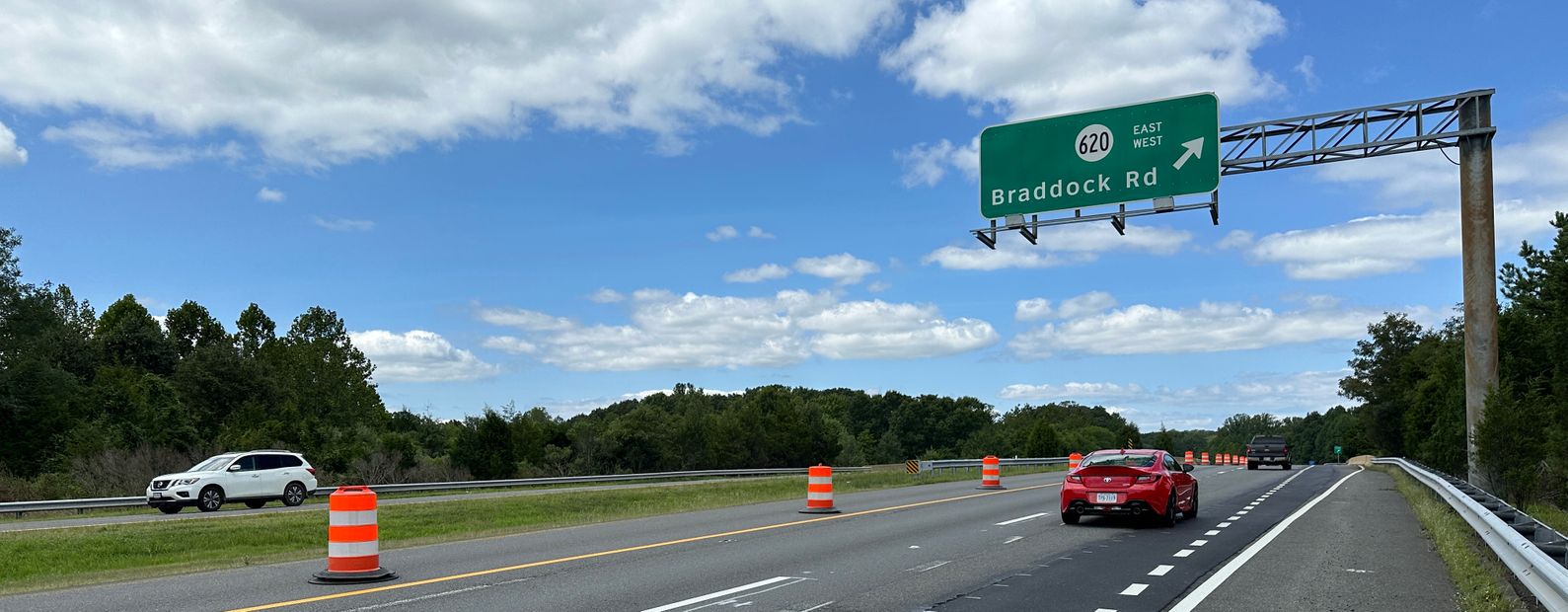
Modern transportation largely bypasses Clifton, which is part of its charm (and sometimes a challenge for residents). The town is about 25 miles from Washington, D.C., but unlike Vienna or Burke, it has no direct freeway or transit link. The main access is via two-lane roads – Clifton Road and Colchester Road – that twist through the woods and fields. There is no train station now (though the active Norfolk Southern/VRE rail line still runs along the edge of town). In fact, trains on the Manassas VRE line roll through Clifton without stopping; the only time they pause is during the annual Clifton Day festival, when a special event train stop is arranged. In the 1990s there was talk of adding a Clifton VRE station, but residents opposed it due to concerns over traffic and parking, and the idea was dropped. For daily commuting, Clifton locals must drive – typically to Centreville, Fairfax, or Vienna to connect with interstates or the Metro. The Fairfax County Parkway and I-66 are about 15–20 minutes away by car. This relative seclusion means commuting to D.C. or Tysons can be a long haul (Clifton’s mayor has noted that homes sometimes take longer to sell because of the commute factor). However, many residents feel the trade-off is worth it for the tranquil lifestyle. And the lack of through-traffic keeps Clifton’s center quiet and safe. In essence, while Vienna and Burke adapted their transportation to integrate with the metro area, Clifton opted out of that rush, remaining a peaceful pocket where you might hear a train whistle in the distance but won’t see a parking lot full of commuters in the town square.
Demographics and economics: Clifton’s population today is tiny – just a few hundred – and notably wealthy. The latest census data show a median household income around $219,000, making it one of the most affluent communities in the nation. Many residents are professionals (doctors, lawyers, business owners) or long-time landowners. The town is not particularly diverse in a statistical sense (over 95% of residents are white), though the greater Clifton area outside town limits has a broader mix. Economically, there’s almost no commercial tax base; Clifton’s handful of small businesses (restaurants, boutique shops) are the only employers in town. Essentially, Clifton functions as a residential village – people live there for its charm and commute elsewhere for work. The cost of buying a home is quite high due to the scarcity and historic value of properties (and the large lot sizes mandated nearby). But residents take immense pride in the town. Many families have been there for generations, and newcomers are often drawn by the close-knit, almost rural community vibe that’s hard to find so close to Washington, D.C.
Lifestyle and community appeal: 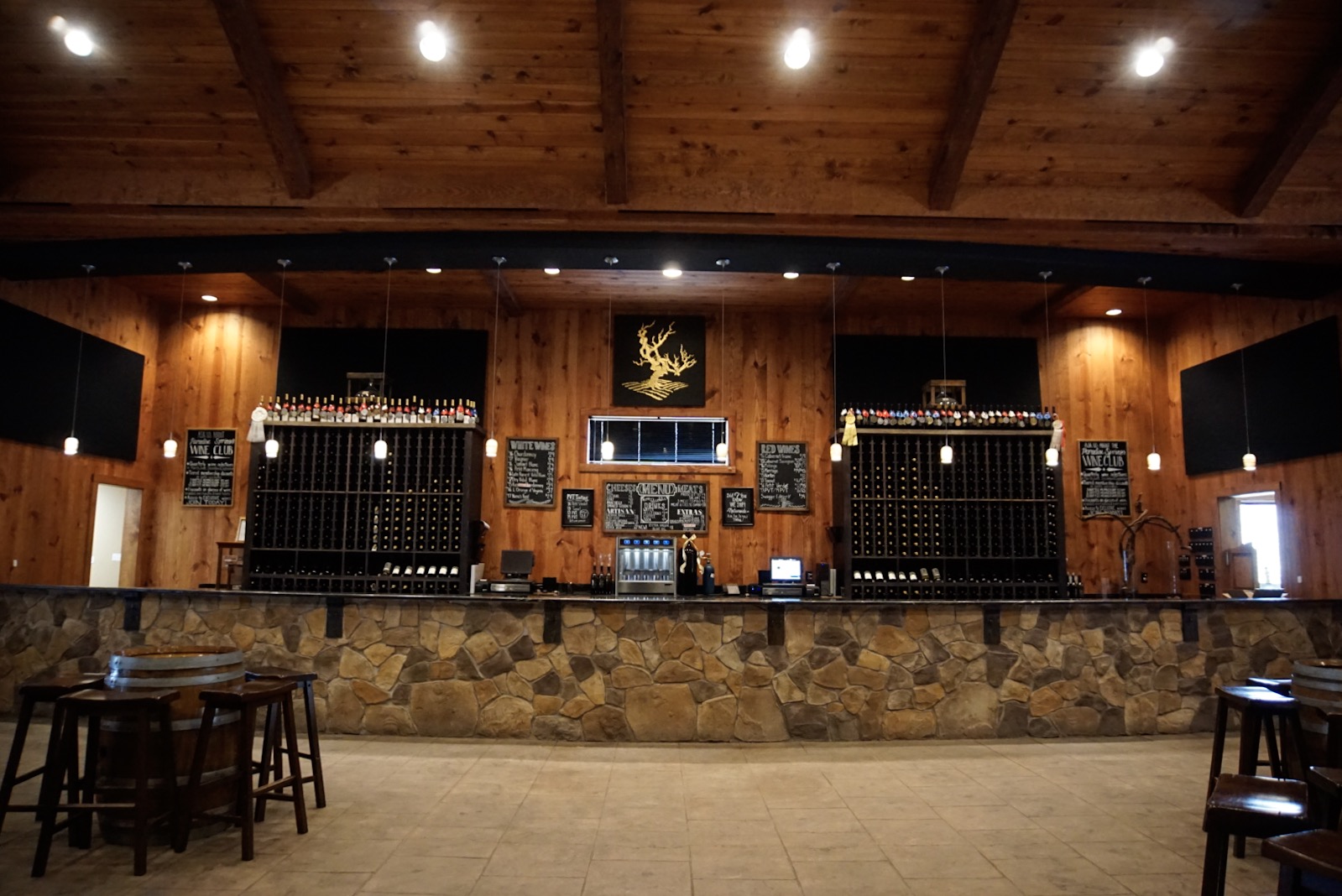
Life in Clifton moves at a slower pace, anchored by community traditions and natural beauty. The town may be small, but it is active. The Clifton Betterment Association and other volunteer groups organize beloved events like Clifton Day, held each October since 1967. On Clifton Day, the streets fill with over 150 artisans, food vendors, and live music, and some 20,000 visitors flock to experience small-town festivities. There’s also a Labor Day Car Show that attracts antique car enthusiasts for charity, and seasonal events like the Clifton Candlelight Homes Tour in December. These events reflect an outsized civic spirit for such a petite town. Daily life is marked by simple pleasures: grabbing an ice cream at Peterson’s Ice Cream Depot (a warm-weather must, housed in a converted caboose-like stand), enjoying brunch or fine dining at Trummer’s on Main (a restaurant in the old hotel building), or having a casual burger at the Main Street Pub (where locals gather on weekends for live music). The town has a lovely little park, Children’s Park, and scenic spots like the Ayre Square gazebo for relaxing. Just outside town, Paradise Springs Winery offers a popular weekend retreat, and there are equestrian trails and hiking in the nearby Hemlock Overlook and Fountainhead Regional Park along Bull Run. For families, Clifton’s one-room elementary school was unfortunately closed in 2010 (students now attend schools in neighboring communities), but kids still participate in Clifton’s holiday parades and Boy Scout troops, etc. The absence of big retail means residents do grocery shopping in Centreville or Fairfax Station, but that’s a minor inconvenience to those who cherish Clifton’s small-town atmosphere. At night, the town is dark and quiet – no streetlights, just the glow of porch lights on historic homes. It’s an atmosphere that one resident-turned-historian described as “a few decades behind the rest of the world” in the best way possible. In Clifton, neighbors greet each other by name at the post office (there’s no home mail delivery, so the post office is a social hub), and the town’s unofficial motto could be “Mayberry in Virginia.” Yet, despite its quaintness, Clifton is fully part of 21st-century Northern Virginia – the residents simply choose to preserve the heritage and tranquility that make their town unique.
FAQ: Living in Vienna, Burke, and Clifton
Q1: How far are Vienna, Burke, and Clifton from Washington, D.C., and what are the commute options?
A: Vienna is roughly 15 miles west of D.C. (about a 25–30 minute drive outside of rush hour) and has a Metro station (Vienna/Fairfax–GMU on the Orange Line) for an easy rail commute into the city. Burke is about 20–25 miles southwest of D.C. (35–45 minutes driving off-peak). There’s no Metro in Burke, but the Virginia Railway Express (VRE) commuter train stops at Burke Centre, providing a convenient ride to Alexandria and downtown D.C. Clifton is around 25 miles from D.C. (45 minutes driving). It has no direct public transit – residents typically drive to park-and-ride lots or VRE/Metro stations in neighbouring areas. Clifton’s distance and lack of transit make the commute a bit longer, which is a trade-off for its secluded charm.
Q2: What are the housing costs and types of homes in these towns?
A: All three communities are in Fairfax County’s high-cost real estate market, but prices vary by town character. Vienna has a mix of mid-century homes and newer upscale builds on neighborhood streets near its downtown. A modest older 4-bedroom might start around $800k , while new custom homes often exceed $1.5 million. Townhomes and condos exist closer to Maple Avenue and near the Metro for those seeking lower-maintenance options. Burke offers primarily 1970s–1980s single-family houses and townhouses. Home prices are a bit more moderate than Vienna – townhomes can be found in the $500–$700k range, and detached homes typically range from the high $600ks to around $1 million (depending on size and updates). Burke Centre’s planned community includes many townhome clusters and a few apartment complexes, making it slightly more affordable for first-time buyers. Clifton, being small and exclusive, has higher prices relative to home size. In-town historic cottages (rarely on the market) can run over $800k for a 2-bedroom, simply due to their charm and rarity. Outside the town, Clifton addresses often mean large custom homes on 5-acre lots – those estates usually cost well above $1 million. In short, Vienna and Clifton tend to command premium prices (Vienna for its location and amenities, Clifton for its uniqueness), while Burke provides more value for the space, though all are considered affluent areas.
Q3: How do the schools compare in Vienna, Burke, and Clifton?
A: All three are served by Fairfax County Public Schools (FCPS), one of the top-ranked public school systems in the nation, so you’ll find excellent schools in each community. Vienna feeds into high-performing high schools like James Madison HS, Oakton HS, or Marshall HS, depending on your address – all of which have strong academics and extracurriculars. Vienna also has well-regarded elementary and middle schools (e.g., Vienna Elem., Thoreau Middle) with active parent involvement. Burke is split between the Lake Braddock Secondary School pyramid and the Robinson Secondary School pyramid. Both Lake Braddock and Robinson are large combined middle/high schools known for robust AP programs, athletics, and music programs. Burke’s elementary schools (such as Terra Centre, Fairview, and White Oaks) consistently get high marks and benefit from Burke’s family-oriented community (PTAs are strong, and enrichment programs are common). Clifton had a small historic elementary school in town, but it closed in 2010; now Clifton kids attend Union Mill Elementary or Fairview Elementary, then Robinson Secondary for middle/high. These schools are also excellent – Robinson in particular is often ranked among Virginia’s best high schools. In summary, parents in all three towns can count on quality education. Differences might come down to size and environment: Vienna schools might be a bit smaller and more “town-centered,” Burke’s are larger but offer lots of resources, and Clifton’s students enjoy the benefits of Fairfax schools with a more rural home setting.
Q4: What is the community vibe like? How do the towns differ in lifestyle?
A: Vienna offers a blend of small-town charm and suburban convenience. It has a walkable center with shops, cafes, and frequent community events (parades, festivals) that create a tight-knit feel. Neighbors often run into each other at the local coffee shop or on the W&OD Trail. Yet, Vienna is bustling compared to the other two – expect more traffic on Maple Ave, a wider variety of restaurants and nightlife, and a generally faster pace (while still family-friendly). Burke is more of a quiet residential suburb. It doesn’t have a centralized “downtown,” so the vibe centers on community pools, backyards, and local parks. It’s the kind of place where cul-de-sac cookouts and youth sports leagues are big – day-to-day life is focused on home and family activities. Burke’s vibe is very friendly but more spread-out; you might have to drive 5-10 minutes to reach friends or shopping. People are active (you’ll see joggers and kids biking in neighborhoods) and community groups (like swim clubs, Scouts, church groups) are well-attended. Clifton is like a step back in time to a country village. The lifestyle there is laid-back and privacy-loving. There are only a few businesses, so much of the social life happens at town events or informally at the post office or general store. Residents enjoy nature – many have horses or gardens, and weekend mornings might be spent on a porch with coffee listening to the birds. Clifton’s one-block main street has just a few eateries and shops; it’s quaint and quiet, especially on weekdays. All three towns value community, but Vienna’s is organized and busy, Burke’s is familial and activity-focused, and Clifton’s is intimate and tranquil.
Q5: What recreational amenities are available?
A: Residents of all three towns have great options. Parks and Trails: Vienna has several town parks plus the 45-mile W&OD Trail (popular for biking and running) cutting through it. It’s also near Meadowlark Botanical Gardens and Wolf Trap National Park (for outdoor concerts). Burke boasts Burke Lake Park, with its large lake for fishing/boating, miles of trails, disc golf, picnic areas, campground, mini train and more – a fantastic resource for all ages. Burke also has Lake Royal Park and many neighborhood pocket parks and walking trails connecting communities. Clifton is adjacent to Hemlock Overlook Regional Park and Fountainhead Regional Park, which offer hiking, mountain biking, horseback riding trails, and water access on the Occoquan Reservoir (great for kayaking). Sports and Facilities: Each community has local sports leagues – Vienna has baseball and soccer fields at Nottoway Park, tennis courts, etc. Burke Centre has community pools and tennis courts, and the South Run Rec Center (just east of Burke) has an indoor pool, gym, and sports fields. Golfers have options like Penderbrook (near Vienna) or Twin Lakes (near Clifton). Community Centers: Vienna has a Town Community Center with a gym, classes, and events. Burke uses Fairfax County’s neighborhood centers (for example, Audrey Moore Rec Center is not far). Clifton, being tiny, doesn’t have its own rec center, but the town’s open spaces and the Clifton Pub and cafes serve as informal gathering spots. Cultural Amenities: Vienna has the Vienna Community Center theater, and it’s very close to Tysons Corner and Fairfax for shopping, dining, and movies. In Burke, people often go to Springfield or Fairfax Corner for more shopping/entertainment. Clifton’s main cultural attraction is its small-town ambiance itself – though it’s not far from the historic town of Occoquan or Manassas for antiquing and such. In summary, outdoor and recreational opportunities are excellent in all three, with Burke and Vienna offering more structured facilities and Clifton offering scenic countryside pursuits.
Q6: Are these towns safe places to live?
A: Yes – Vienna, Burke, and Clifton all enjoy very low crime rates and are considered extremely safe communities. Fairfax County in general is one of the safest large counties in the U.S., and these towns are no exception. Each has a strong neighborhood watch presence and responsive local police (Vienna even has its own town police department). Violent crime is rare. Most residents feel very secure letting kids play outside or walking around in the evening. Of course, normal precautions apply (lock your doors, etc.), but safety is a big part of the appeal. As a gauge, Vienna and Clifton often make “best places to live” lists partly due to their safety. Burke’s crime is also minimal – typical suburban issues like an occasional car break-in are the most one hears about. Overall, families and retirees alike find peace of mind in these communities.
Q7: What is the difference between living in an incorporated town (Vienna or Clifton) and an unincorporated area like Burke?
A: In practical terms, day-to-day life isn’t drastically different, but there are a few distinctions. Vienna and Clifton being incorporated means they have their own town governments, mayors, and town councils. They can enact local ordinances (for example, Vienna has its own zoning rules, and Clifton has strict historic district guidelines). They also provide some local services – Vienna handles its own trash collection, maintains town roads, has its own police force, etc., funded by town taxes. Burke, on the other hand, is governed directly by Fairfax County. County supervisors make the decisions, and services like police, trash, road maintenance are all via the county or private HOAs. As a resident, this means in Vienna/Clifton you might be more involved in hyper-local civic issues (like Vienna debates about downtown development, or Clifton’s town council managing events and historic preservation). In Burke, you’d engage more with county-level governance or your homeowners association. Taxes can differ slightly: Vienna and Clifton residents pay an extra town tax for those additional services, whereas Burke residents just pay county taxes (and any HOA dues). Some people like the town structure because it gives a stronger sense of community identity and more local control – Vienna, for instance, can brand itself with a town newsletter, festivals, and its own small-town services. Clifton’s government ensures the village character is upheld. Burke’s identity is a bit less formal – it’s a collection of neighborhoods rather than a “town-town.” That said, Burke residents still feel a strong community bond; it’s just fostered through civic associations and HOA boards rather than a mayor. In summary, living in Vienna or Clifton comes with the pride of a hometown label and local governance, while living in Burke means being part of a large county with services managed at that higher level. All are great places to live; it often comes down to the lifestyle and environment each person prefers.
Q8: What draws people to each of these communities today?
A: Vienna draws those who want a blend of convenience and community – you can have a short commute (via Metro or car) to job centers, walk to restaurants and coffee shops, and enroll kids in top-notch schools, all while living on a quiet street with a real small-town camaraderie. People often say Vienna has “everything you need” in a 4-square-mile package, from grocery stores to doctors, plus fun events, making it ideal for families and also appealing for retirees who want walkability. Burke appeals to folks looking for a classic suburban family environment – bigger yards, lots of parks, a slower pace than areas closer to D.C. Many military and government families choose Burke for its reasonable commute to the Pentagon/Fort Belvoir, spacious homes, and safe, friendly feel. The planned community aspect (pools, trails) is a big draw, as is Burke’s natural beauty (proximity to Burke Lake Park is a huge plus for outdoor enthusiasts). Residents often stay for decades because it’s a place where kids can bike to a friend’s house and you know your neighbors. Clifton attracts people who yearn for privacy, charm, and a rural atmosphere – often higher-income buyers who don’t mind the longer commute in exchange for a unique home and setting. It’s ideal for someone who might want land (for horses or hobbies), or simply loves historic houses and the idea of living in a storybook town. Artists, writers, and those who work from home are sometimes drawn to Clifton’s tranquility. Also, Clifton’s tight community and traditions are a draw – not everyone gets to live in a place where there’s one blinking caution light, everyone gathers for a Halloween chili cook-off, and the local cafe owner greets you by name. In short, each community has its niche: Vienna for all-around suburban convenience with character, Burke for peaceful family-centric living with nature at your doorstep, and Clifton for a one-of-a-kind historic small-town lifestyle that’s increasingly rare in Northern Virginia.
Q9: Do these towns have any notable “claims to fame” or local quirks?
A: Absolutely, each has its fun facts! Vienna’s claim to fame includes the Freeman Store and Museum (a Civil War-era store that once served as a hospital) and the town’s iconic Red Caboose on Church Street – a real caboose placed in 1976 to honor Vienna’s railroad past. Vienna is also known for its “Little Library,” a tiny 1897 library building now a museum, and for hosting the world’s very first “zip code celebration parade” in 1980 (when its zip 22180 matched the date 2/21/80!). Burke has a peculiar footnote in aviation history: as mentioned, it was almost the site of Dulles Airport, and local legend has it that in the late 1950s, residents posted signs saying “NO AIRPORT” on cows and barns to protest – and they won! Burke is also known for Burke Lake’s mini train ride, which generations of kids have enjoyed. Silas Burke’s old house, visible on Burke Lake Road, is a local landmark (soon to open as a county historic site). Clifton, aside from being a film set for a few scenes of the movie Broadcast News in 1986, is famous for ghost lore – the legend of the “Bunny Man Bridge” is just outside Clifton, a tale that attracts curiosity seekers every Halloween. The town also had Virginia’s first female town mayor, and famous actress Helen Hayes frequently summered in Clifton in the early 1900s. A fun quirk: there’s only one stop sign in Clifton’s center (and no street delivery of mail – everyone uses P.O. boxes). So, whether it’s Vienna’s love of parades, Burke’s victorious NIMBY airport battle, or Clifton’s spooky folklore and one-stop-sign town, these communities have plenty of local color in addition to their general history.
A: It really depends on your priorities and lifestyle desires, as each offers something a little different. Choose Vienna if you want a balance of suburban life with a walkable small downtown, easy access to Metro, and lots of community events – it’s great for those who enjoy being able to stroll to restaurants or quickly get to city amenities, and who appreciate a tight-knit neighborhood feel in a more bustling setting. Choose Burke if you prefer a quieter, more traditional suburb with bigger yards, tons of parks, and a strong family-oriented vibe – it’s ideal if you don’t mind driving for most errands and you value a spacious home environment, top schools, and outdoor recreation (Burke Lake) over nightlife or shopping. Choose Clifton if you dream of a unique historic home or more land, and you’re okay with rural quiet and a longer commute – Clifton is perfect for those who find charm in country lanes, love the idea of being part of preserving history, and don’t need convenience on their doorstep (the nearest grocery store is 15 minutes away). Essentially, all three are wonderful and safe; it comes down to whether you see yourself in a lively small town (Vienna), a peaceful suburban community (Burke), or a secluded historic village (Clifton). Many people fall in love with the feel of one in particular after visiting – so we’d suggest exploring each in person, grabbing a meal or attending an event, and seeing which place feels like home to you.
Ready to Move to Northern Virginia?
Whether you're relocating to Vienna, Burke, or Clifton, our team is here to help you find the perfect home.
Browse homes across Northern Virginia
Stay Updated! Subscribe to our newsletter for more intriguing local stories, real estate insights, and market trends: Subscribe Now.
Email me at info@colganteam.com ColganTeam.com Instagram | Stan Store
— Chris Colgan, Realtor & Founder
Leave A Comment